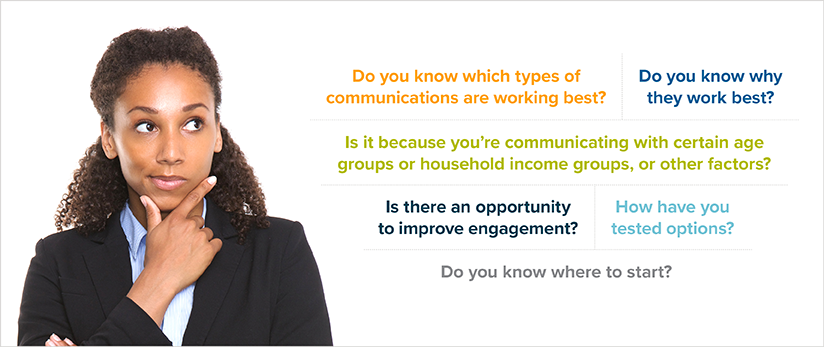June 29, 2021
When Orchestrating Individualized Patient Engagement Strategies, There’s No End to Better
RevSpring dedicates a blog post each month to explore what matters most in healthcare engagement and payments. Last month we focused on “Empowerment.” Here we explore “OmniChannel” – multiple communication channels working in coordination–and the power of analytics to continually improve and maximize value from patient outreach.
Gone are the days when a simple billing statement sent by USPS would generate the desired response: timely patient payments. With the explosion of digital communications options—including email, text, IVR, and patient portals—revenue cycle managers and healthcare administrators cannot rely on one static channel anymore. Instead, they must harness multiple channels in the right combination to reach patients most effectively.
Identifying the right mix of channels for patients and using them together in the most effective ways is challenging because different people respond differently. For a healthcare practice, system, or hospital with many patients, this can create endless permutations in the communications mix and potential chaos!
When done correctly, however, patients and providers both benefit. Patients receive information and statements in convenient ways they prefer—increasing the likelihood they will respond quickly. Providers avoid wasted communication touches (i.e., needless expense) that don’t work and, worse, irritate patients.
Increasing payments and eliminating wasted communications is why a smart data-based OmniChannel approach is critical. It enables providers to see—and act on—patient differences. It happens by making those differences come alive with easy-to-understand action centers (the opposite of passive dashboards), empowering providers to execute a dynamic engagement strategy individualized to each patient.
‘Set it and Forget It’ Won’t Optimize Your Results
Utilizing multiple communications channels has become popular among many vendors in the financial payments industry. But there’s a significant difference between “multi-channel” and “OmniChannel.”
It’s not enough to simply lump some patients into a text/email category based on broad generalizations, such as age range, and then never think about those patients or how you communicate with them ever again. Equally problematic with a multi-channel approach: relying solely on what patients say they prefer versus factoring in how they actually behave.
Broad aggregate classifications make it difficult to see meaningful patterns in how patients pay their bills or respond to communications. It’s similar to the difficulty you might have in seeing familiar landmarks when your plane is high in the air. As you get closer, though, those landmarks come into view and, eventually, you can see the roads that will take you to your desired destination.
An intelligent data-driven approach turns random communications tools into an effective OmniChannel engagement strategy. Then you can begin to actually see and identify meaningful patterns—correlations or causal relationships—which can drive more precise communications and better financial outcomes—for you and your patients.
If OmniChannel seems complicated, it’s not.
It’s at work now in your smart speaker, television or wherever you watch Netflix or Amazon programming or listen to music courtesy of Spotify. Those entertainment platforms, and others like them, continually refine and update the programming and music they recommend based on customer behavior as revealed by continuous data analysis.
Healthcare financial stakes are higher than ever before. Providers need to ensure that patient communications are efficient and effective, particularly when payments are involved. Smart data analytics—combined with action centers that reveal and predict patient behavior—can put you on a path toward eliminating wasted communications and the patient frustration they entail.
With OmniChannel communication, optimization of patient engagement is ongoing. That’s how patient financial engagement can feel as personalized, pleasant, and uncomplicated as a spot-on new music or movie recommendation—inspiring patients to move quickly in ways you prefer.
Bottom line: The truth is in the data details
Don’t equate sending more types of communications with an OmniChannel strategy. If you’re not making continuous decisions about what, how and when to communicate based on data, you’re not using OmniChannel communication. Here are some questions to ask if you’re not sure:

If you can’t answer those types of questions, you will surely benefit from a true OmniChannel approach. When it comes to OmniChannel optimization—seeing is believing, understanding, and improving—continuously!